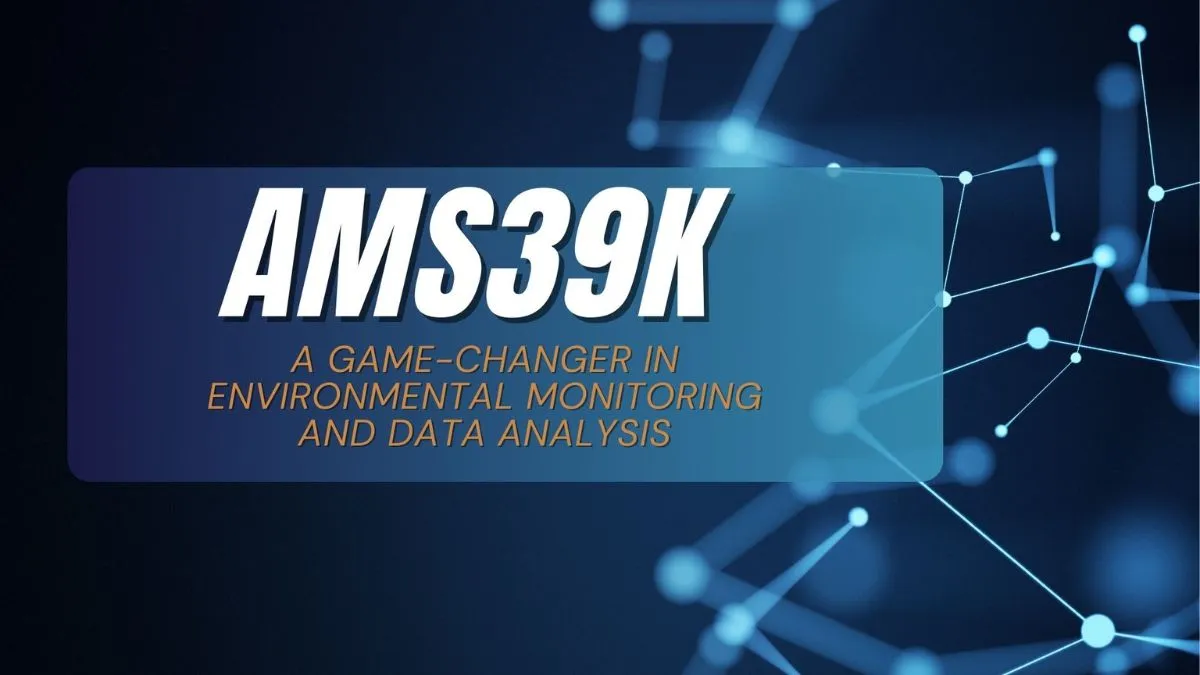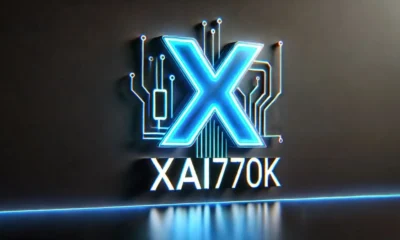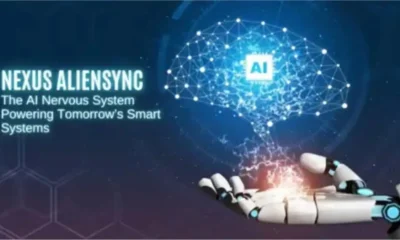TECHNOLOGY
AMS39K: A Game-Changer in Environmental Monitoring and Data Analysis

Introduction to AMS39K
A cutting-edge technical system called AMS39K is intended to maximize performance in a few industries. It is a critical solution that improves resource management, system efficiency, and data processing as companies confront rising demands for efficiency. Its influence is particularly noticeable in industries including manufacturing, healthcare, logistics, and environmental monitoring, where successful operations depend on well-informed decision-making.
Key Features of AMS39K
Enhanced Data Processing
Large data volumes are processed fast and efficiently using AMS39K, which helps enterprises immediately make sense of complex information. It has a major influence on operational strategies and decision-making by utilizing its strong data processing capabilities. Businesses have access to vital information that helps them react quickly to shifting circumstances and make better decisions.
System Efficiency Improvements
It’s exceptional capabilities include streamlining processes and cutting down on resource waste. The system uses a number of strategies to improve productivity by streamlining procedures. For instance, it has been demonstrated that it reduces material waste in manufacturing by examining production patterns and making recommendations for enhancements, which results in significant cost savings.
Advanced Algorithms for Real-Time Data Analysis
Sophisticated algorithms are employed by AMS39K to enable real-time data analysis. By using these algorithms, organizations can make proactive decisions by getting information as events happen. Real-time insights offer numerous advantages to businesses. They enable them to promptly recognize patterns, mitigate risks, and seize opportunities, all of which contribute to improved performance.

Industry Applications of AMS39K
Manufacturing
It is essential to the industrial industry’s production process optimization. Businesses that have used AMS39K to evaluate production indicators and locate bottlenecks have experienced greater productivity. Examples from the real world show how manufacturers have used it to increase quality control and shorten cycle times.
Healthcare
It improves healthcare operations in a few ways. Because of its features, healthcare providers can follow patient data in real time and give timely, individualized care. Hospitals can monitor patient status, allocate resources optimally, and enhance overall patient outcomes by employing AMS39K.
Logistics
In logistics, It greatly enhances supply chain management. The technology reduces costs and raises service standards by streamlining delivery routes and improving inventory control. For example, after implementing AMS39K, a multinational logistics company observed a 30% increase in on-time delivery.
Environmental Monitoring
It is also used in environmental monitoring, where it analyzes real-time data to determine the state of the environment. Utilizing it, organizations can guarantee regulatory compliance and support sustainability initiatives by reducing their environmental impact.
How does AMS39K work?
The sophisticated algorithms used by AMS39K enable smooth data processing and analysis. Because of its automation potential, firms may simplify work and free up human resources for more strategic endeavors. The importance of real-time data analysis stems from its capacity to facilitate several organizational procedures, hence augmenting overall efficiency.
Benefits of Implementing AMS39K
Automation of Complex Tasks
Automating Difficult Activities Because of AMS39K’s task automation capabilities, employees work more efficiently because less manual labor is required. By automating repetitive tasks, organizations can allocate their workforce to more impactful areas.

Downtime Reduction
Reduction of Downtime AMS39K uses techniques to accurately forecast and avoid downtime. Empirical instances demonstrate that enterprises utilizing AMS39K have greatly decreased unscheduled downtime, resulting in enhanced efficiency and financial benefits.
Enhanced Decision-Making
Improving Decision-Making Strategic business choices are supported by AMS39K, which has access to data-driven insights and analytics. Businesses can use these insights to find areas for expansion, optimize processes, and make wise decisions that lead to success.
Challenges and Considerations
While the benefits of AMS39K are compelling, organizations must consider potential challenges during implementation. These may include integrating AMS39K with existing systems and ensuring adequate staff training. Support and training are crucial for effective utilization, allowing teams to maximize the system’s potential.
Real-World Applications of AMS39K
It has been successfully installed in a variety of industries, according to several case studies. For instance, a retail chain claimed better inventory control and customer satisfaction following the implementation of AMS39K. Testimonials from organizations highlight how effectively it promotes efficiency and optimization, portraying it as a revolutionary solution.
Future of AMS39K and Emerging Technologies
The development of AMS39K has bright prospects for a few industries. Forecasts indicate a greater degree of integration with other cutting-edge technologies, like the Internet of Things (IoT) and artificial intelligence (AI). By advancing efficiency and innovation, this combination may establish it as a pioneer in performance optimization.
Conclusion
In conclusion, AMS39K is a revolutionary technical system that dramatically improves performance optimization in a variety of sectors. Its primary characteristics, which include automation, real-time insights, and sophisticated data processing, make it a priceless tool for businesses looking to increase productivity. Businesses can gain a competitive edge and improve operational effectiveness by utilizing it as they move to the future. Organizations are recommended to explore adopting AMS39K to harness its full potential for performance enhancement.
-

 BIOGRAPHY7 months ago
BIOGRAPHY7 months agoBehind the Scenes with Sandra Orlow: An Exclusive Interview
-

 HOME1 year ago
HOME1 year agoDiscovering Insights: A Deep Dive into the //vital-mag.net blog
-

 HOME1 year ago
HOME1 year agoSifangds in Action: Real-Life Applications and Success Stories
-

 BIOGRAPHY1 year ago
BIOGRAPHY1 year agoThe Woman Behind the Comedian: Meet Andrew Santino Wife




























